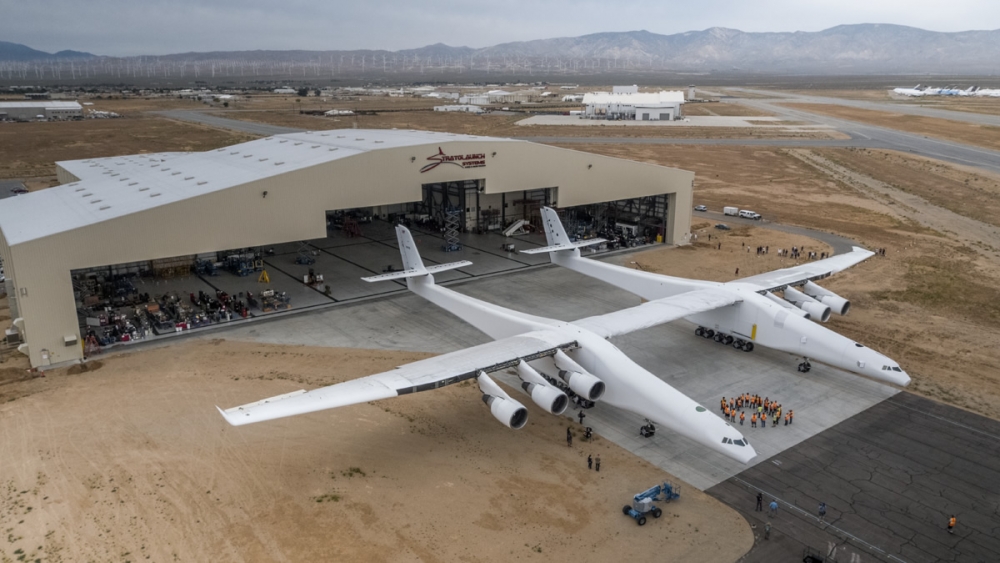The world’s biggest composite aircraft had its first outing this week as it left a hangar in California’s Mojave Desert supported on its 28 wheels.
The Stratolaunch is designed to take payloads of more than 500,000lbs (226,796 kg) and launch them into low Earth orbit as part of a plan by Microsoft co-founder Paul Allen to revolutionize the satellite launch industry.
With a maximum take-off weight of 1.3 million lbs, it utilizes six Pratt & Whitney Boeing 747 engines and will have an operational range of about 2000 nautical miles. The world’s biggest cargo plane, the Antonov An225, has an MTOW of 1.4m lbs.
Its 385ft (117.4m) wingspan is the biggest of any aircraft and greater than the length of an American football field while its twin fuselages are 238 ft long and sport 50ft high vertical stabilizers.
Stratolaunch chief executive Jean Floyd said resting the aircraft’s full weight on its wheels for the first time was a crucial step in preparing it for ground testing, engine runs, taxis tests and first flight.
“Over the coming weeks and months, we’ll be actively conducting ground and flight line testing at the Mojave Air and Space Port,’’ he said in a company announcement. “This is a first-of-its-kind aircraft, so we’re going to be diligent throughout testing and continue to prioritize the safety of our pilots, crew and staff. Stratolaunch is on track to perform its first launch demonstration as early as 2019.’’
The big plane will initially carry a single Oribital ATK Pegasus XL vehicle but is designed to take up to three to enable to launch multiple payloads in a single mission.
“We have already started preparations for launch vehicle delivery to our Mojave facilities,’’ Floyd said. “We’re actively exploring a broad spectrum of launch vehicles that will enable us to provide more flexibility to customers.’’
Stratolaunch is one of a number of companies interested in developing the commercial launch market using aircraft.
Virgin Galactic plans to launch satellites from beneath the belly of a Boeing 747 and aerospace giant Boeing announced last month that it was working with the U.S. Defense Advanced Research Projects Agency (DARPA) to design, build and test an experimental spaceplane called the Phantom Express.
The XS-1 will be an autonomous, reusable spaceplane capable of carrying and deploying a small expendable upper stage to launch small (3,000 pounds or 1,361 kg) satellites into low Earth orbit.
Powered by an Aerojet Rocketdyne AR-22 engine, version of the Space Shuttle’s liquid oxygen-liquid hyrdrogen main engine, It would deploy a satellite at the edge of space and return to Earth to land on a runway to be prepared for its next flight.
“Phantom Express is designed to disrupt and transform the satellite launch process as we know it today, creating a new, on-demand space-launch capability that can be achieved more affordably and with less risk,” said Darryl Davis, president, Boeing Phantom Works.
The program’s test phase will involve Boeing and DARPA conducting a demonstration of 10 flights over 10 days.
























